Research Article Open Access
Exploring Obesity and Blood Lipids Levels in Farmers in Eleme Local Government Area, Rivers State of Nigeria
| Birabi BN1*, Nnamdi-Eze A2 and Monye NC3 | |
| 1Contract Consultant Physiotherapist Medical Department, Shell Petroleum Development Company, Nigeria | |
| 2Principal Physiotherapist, University of PortHarcourt Teaching Hospital, Nigeria | |
| 3Contract Physiotherapist Medical Department, Shell Petroleum Development Company, Nigeria | |
| Corresponding Author : | Birabi BN Contract Consultant Physiotherapist Medical Department Shell Petroleum Development Company [East] PortHarcourt, Nigeria Tel: 234-8033246256 E-mail: benesmedicals@gmail.com |
| Received January 21, 2014; Accepted March 13, 2014; Published March 17, 2014 | |
| Citation: Birabi BN, Nnamdi-Eze A, Monye NC (2014) Exploring Obesity and Blood Lipids Levels in Farmers in Eleme Local Government Area, Rivers State of Nigeria. J Obes Wt Loss Ther S4:006. doi:10.4172/2165-7904.S4-006 | |
| Copyright: © 2014 Birabi BN, et al. This is an open-access article distributed under the terms of the Creative Commons Attribution License, which permits unrestricted use, distribution, and reproduction in any medium, provided the original author and source are credited. | |
Visit for more related articles at Journal of Obesity & Weight Loss Therapy
Abstract
Objective: The assumption about the healthy farmer has been explored in most developed countries and criticisms abound on environments such as the farm place encouraging excessive food intake and mechanization discouraging physical activities which encourages healthy lifestyle. This study sought to explore obesity and blood lipids abnormalities of farmers in a farm settlement in Rivers State, Nigeria.
Method: Data for determining Body Mass Index (BMI), Percent Body Fat (%BF) were gathered and laboratory investigations of levels of blood lipids were carried out on 58 farmers. Results: Data was fed into SPSS version 20 for descriptive statistics and frequency distribution. 33(56.9%) were females and 25(43.1%) males. Mean BMI was 21.67 ± 3.22, only 1(3%) of the females was overweight: 6(24%) and 1(4%) of the males were overweight and obese respectively. Mean %BF was 19.14 ± 6.49, only 1(3%) of the females was obese while 1(4%) and 3(12%) of the males were obese and overweight respectively. 21 females and 15 males accepted for their blood samples to be taken. Mean LDL-C was 3.04 ± 0.89, 16(76%) of the females tested fell in the “favourable prognosis”; 4(19.04%) and 1(4.76%) fell in the “Standard Risk” and “Increased Risk” categories respectively, while 13(86.67%) and 2(13.33%) of the males fell into the “favourable prognosis” and “Standard Risk” categories respectively. Mean HCL-C was 0.86 ± 0.35, 17(80.95%) and 4(19.05%) of the females fell into “Increased Risk” and “Favourable” categories respectively while 9(60%) and 5(33.30%) of the males fell in the “Increased Risk” and “Standard Risk” categories respectively. Mean TC was 4.35 ± 0.90, 16(76.19%) and 5(23.81%) of the females fell in the “favourable prognosis” and “Standard Risk” categories respectively while 14(93.33%) and 1(6.67%) of the males fell in the “favourable prognosis” and “Standard Risk” categories respectively. Mean TG: 1.01 ± 0.61, 18(85.7%) of the females had < 1.71 mml/l which is favourable, 2(9.5%) had suspected risk and 1(4.8%) had “Increased Risk” while 12(80%) of the males had < 1.71 mml/l; 2(13.33%) and 1(6.67%) “Increased Risk” and “suspected risk”.
Conclusion: Farmers in this part of Nigeria are predominantly within healthy weight range and “favourable” blood lipids levels except for HDL-C for which they had increased risk and standard risk levels.
| Keywords |
| Explore; Obesity; Blood lipids [Low density Lipoprotein Cholesterol ( LDL-C); High density Lipoprotein Cholesterol (HDL-C); Total Cholesterol (TC) and Triglycerides (TG)] |
| Introduction |
| Obesity arises from an imbalance between energy input and output [1], therefore the underlying factor could be technically described as malnutrition (wrong nutrition), whether affluence or poverty malnutrition more often due to excessive intake of high calorie food. |
| Obesity is defined as an excess of body adiposity, for practical reasons body weight has been used as a surrogate for adiposity which is not easy to measure in routine examinations. Until the 1970s obesity was defined by reference to an “ideal body weight” derived from actuarial tables compiled by the life insurance industry. A body weight within the ideal range carried a lower risk of premature death [2]. |
| Recent observational studies have found that dietary patterns and obesity rates vary between neighbourhoods, with living in a low income or deprived area independently associated with the prevalence of obesity and the consumption of a poor diet. Such associations have been consistently reported in countries such as the United Kingdom, The Netherlands, Sweden, Australia, United States and Canada [3]. High rates of obesity are likely to be found in those with the lowest incomes and the least education, particularly among women and certain ethnic groups [2,4]. |
| Farmers are generally assumed to be healthier than the rest of the society in which they live, after all, they work outdoors in good, clean, unpolluted environment; and as producers of food they can select and eat the best produce. Likewise, the exercise they are involved in should help to keep weight down with all the social and medical benefits that this brings, including a reduction in coronary artery and other arterial diseases. However some of these concepts about healthy farmers need to be challenged. Farming in world-wide term, is still a very labour intensive occupation but like other industries in the developed countries, the amount of direct human physical activity has been greatly reduced by labour-saving devices [5]. A farmer opined that there is still hard, physical labour to be done on farms and farmers still work hard, but they don’t work as hard as they used to, now machines do practically every step but they still like to eat just like they did when they worked hard all day, and that if you eat as much as ever and work less, guess what happens - you gain weight [6]. Many rural farmers have given up subsistence farming of multiple crops that provide a more balanced diet in favour of a single, high-yielding cash crop [7]. |
| Although increasing attention is being paid to health and safely in the workplace by national governments and international organizations through education with enlightenment programmes and enforcement of regulations, it is most difficult to achieve in small work units; nowhere more is this case than in farming which may have the added advantage of isolation [8]. |
| Professional groups are agreed that the only way to reduce the overwhelming burden of disease in the world population is to make people better educated about the risks; farmers are in danger of being by-passed by this explosion of knowledge [5]. |
| Whereas some countries have special programmes for the promotion of their farmers’ health, no such exist in Nigeria to the best of these authors’ knowledge. Only programmes to boost farm produce are initiated with very few being sustained. The farmer’s health has not been subjected to studies as a major concern that has a high likelihood of even impacting on production. Most hands-on farmers in Nigeria are of low educational background as they take to farming as an occupation early in life because of their natural environment of cultivatable land (soil and vegetation). They depend on the natural resources and the need to harness these resources. The bulk of the labour in the last two decades however has shifted from family sources to hired hands. Farming in Nigeria cannot be said to be mechanised as in the developed countries, the farmers still work very hard and they have the choice to eat a lot regardless of the caloric intake. |
| Obesity: A global epidemic |
| Obesity was considered a condition associated with high socioeconomic status; indeed early in the 20th century, most populations in which obesity became public health problem were in the developed world, United States and Europe. In more recent decades, available data show increases in obesity are in developing countries such as Mexico, China and Thailand [9]. |
| The World Health Organization consultation in 1997 formally recognized the global nature of obesity epidemic [10]. Obesity in developing countries initially affected primarily the higher socioeconomic strata of the population but more recent trends show a shift in prevalence from the higher to the lower socioeconomic level [2]. |
| In the past in Nigeria, obesity was considered fashionable and evidence of good living. The general perception was that a woman without adiposity on the buttocks and stomach and a man without a bulging abdomen are not well to do. However with recent increase in level of awareness of its associated risks, more studies are being carried out and news papers feature articles on obesity. |
| A newspaper article featuring obesity queried, if it is really an evidence of good living or a race to health problems [11]. A special newspaper report in 2010 declared it “new silent killer in town”; stating that in Nigeria obesity is visible and emphasizing that in 1996, the Associated Press cited the World Health Organization statement that more than one third of African women and a quarter of African men are estimated to be overweight, predicting that it will rise to 41% and 30% respectively in 2016. Men still viewed a potbelly as a badge of pride and success [12]. |
| Whereas the developed countries are making serious efforts to stem the rising tide of obesity, Nigeria it would appear, is yet to actively join in this campaign [13]. |
| Indeed there are ethnic groups particularly in the Niger Delta region where in the past, brides and young women who have just had babies, were confined to “the fattening room for beautification and high quality was feeding” for a period of one to three months. They are restricted to consumption of high calorie food and physical inactivity. Although this culture is gradually giving way as it is being resisted by the modern young women, they are still compelled in some ethnic groups to spend at least 7 days in this “fattening room” to maintain the culture. |
| Obesity in our environment is strongly associated with a family history and a sedentary lifestyle [14]. |
| Nigeria seems to be responding to this global alert as evidenced in the various studies and newspaper publications. However most of the studies are on the general population- adults, adolescents and children. None of these studies have considered if obesity could be a health concern among Nigerian farmers as it has been observed in the developed countries. |
| Risk factors for chronic and degenerative diseases, especially overweight and obesity are rarely examined among farmers. In a study of prevalence of overweight and obesity in Austrian male and female farmers, results show that 15% of the farmers were obese; 42.9% were overweight. The prevalence of overweight and obesity was high amongst 15-19 year olds and reached a second peak among the age groups 50-59 and 60-69 years old [15]. |
| Preliminary data in the study of the Western District Service and the Deakin University in collaboration with the National Centre for Farmer Health on obesity and depression in farm men and women indicates that the participants had an average BMI of 31.31 [16]. |
| Obesity assessment |
| The commonly used tool for assessing obesity is the Body Mass Index [BMI] for the general population. The limitation of BMI as a risk assessment tool are also recognised and there is continuing interest in identifying alternate or complementary indices linking body adiposity and disease risk [17]. In the 1980s, the ideal body weight approach was replaced by BMI and the commonly used cut offs for overweight is BMI 25-30 and BMI>30 for obesity for both men and women were adopted to define obesity in adults [2]. |
| Criticisms of the use of BMI for body composition assessment are that it is a relatively poor indicator of body fat percentage and it results in inaccurate classifications (normal, overweight, obese) for some individuals. Simply inquiring if the individual participates in resistance-type exercise (either occupationally or recreationally), particularly if he or she has had a stable body weight in adulthood, identifies those for whom the BMI is more likely to be inaccurate. For these individuals, BMI classification should not be used; more advanced methods to estimate a body fat percentage should be used instead. Clinical and fitness professionals can use additional body composition measurements for any individuals for whom they have concern about the accuracy of the BMI classification [18]. |
| However the correlation between the BMI number and body fatness is fairly strong but the correlation varies with sex, race and age. These variations include the following: |
| At the same BMI women tend to have more body fat than men. |
| At the same BMI, older people on average tend to have more body fat than younger adults. |
| Highly trained athletes may have a higher BMI because of increased muscularity rather than increased fatness [19]. |
| Skinfold analysis |
| The popular method of skinfold measurement to predict percent body fat can provide reasonable estimates if performed by a properly trained technician and with a quality skin fold calliper. Skin fold analysis is considered a doubly indirect method; is still an estimate or prediction of body density and thus percent body fat [18]. |
| There are some issues using skinfolds to estimate percent body fat (%BF) for a number of reasons, including the fact that distribution of body fat varies with age, sex, race and athletic activity. Reasonably accurate prediction of percent body fat from skinfolds therefore requires that the equation used for a given person must have been the one developed using a similar subject population. This has led to a huge number of “population specific” equations, many of which are probably based on too few subjects to be of any value. In an attempt to remedy this problem, Jackson and Pollock and Jackson, Pollock and Ward have provided generalized equations that have been validated for various age groups and athletic and non-athletic populations [20]. |
| Lipid risk factors |
| Experimental investigations, epidemiological studies and clinical trials indicate conclusively that high serum cholesterol is a major risk factor for coronary heart disease and that lowering cholesterol levels reduces the risk [21]. |
| The three major sizes of lipoprotein particles in which cholesterol circulates in the plasma are: very low density lipoprotein cholesterol (VLDL-C) low density lipoprotein cholesterol (LDL-C) and high density lipoprotein cholesterol (HDL-C). Several large epidemiological studies suggest that for each 1 mg.dL��?1 increase in HDL-C, there is an accompanying 2% decrease in coronary heart disease risk in men and a 3% decrease in women [22]. |
| A low LDL-C level does not eliminate the risk impacted by a low HDL-C but a high HDL-C appears to offset some of the risk of a high LDL-C [23]. HDL-C is the “garbage trucks” of the blood system, collecting cholesterol and dumping it into the liver [24]. HDL-C plays a critical role in reverse cholesterol transport [25]. It may retard atherogenesis by maintaining endothelial function [26]. |
| The artherogenic remnant lipoproteins that make up the VLDL fraction of serum cholesterol are rich in triglycerides. |
| Meta-analysis has revealed that elevated levels of triglycerides constitute an independent risk factor for coronary heart disease [27]. Although genetic influences, disease states, smoking, excess alcohol and use of certain drugs may result in hypertriglyceridemia, the most common causative factors are obesity and physical inactivity [28]. |
| The farmers’ culture, workload and work stress |
| They cultivate mostly yam, cassava, oil palm, plantain, maize, cocoyam, fruits and vegetables. In the past they operate the shifting cultivation, a system where fields are cleared of their original vegetation cover, cultivated briefly for a year or two and then left to fallow for the restoration of fertility. All field operations are by manual labour, and because labour for farming in the rural areas is provided largely by the family, job types are carried out with consideration for age and sex. While the men aged 18-50 years carry out such operation as bushclearing, tree-felling, logging, packing and burning, soil-tilling, pegging, planting, cutting and transportation of stakes, staking and harvesting, the women in this age range plant, weed, harvest, package and transport to the consumer markets. Two or three families pull together their labour strength with a few hired hands to carry out the very tedious operations particularly those that have to be accomplished within set time during the cropping season. The older men and women are only involved in planting, minor weeding and less tedious harvesting. |
| They operate the 5 day - week market days where people from far come to buy their produce at give -away prices due to difficulty in transportation to markets that would have yielded more profit, and lack of storage facilities for the perishable produce. Transportation of produce from the farms to their private storage places and market for most farmers is manual either on the head, on the bicycle and manually driven locally made trucks, for those who can afford them. Work starts at about 6.00 am (sunrise) to about 6.30 pm (sunset) with short periods of rest in between. |
| The farmers are exposed to hazards of heat and cold, during the dry and rainy seasons respectively. |
| Heat exposure represents an extra load on the circulatory system, by causing the circulating blood volume to serve the dual purpose of transporting oxygen and transporting heat from the interior of the body to the skin where it can be dissipated in order to prevent overheating. This may limit the oxygen transporting capacity of the blood circulation and prolonged heat strain may also impair mental and psychomotor functions, thus affecting performance, and exhaustion occurs much sooner during heavy physical work in the heat because the blood in addition to carrying oxygen now has to act as a cooling fluid. To do this while still maintaining the cardiac output, the heart rate has to increase [29]. |
| Method |
| Research design |
| The study design was exploratory, as the purpose was to gain insight into the state of some health indices of the farmers. |
| Population |
| The population for this study was made up of farmers of Agbeta farm settlement, in Eleme Local Government Area in the Rivers State of Nigeria. |
| Background of the farm settlement |
| The Agbeta Community as it is now known is located in the Eleme local Government Area of Rivers State. It is said to have started as a transit farm settlement where people from Ebubu and Eleme used as resting camp during the farming seasons of the year. The first two residents are said to have come from Gokana in Ogoni land. Being traditional farmers from a high density population area, consequent land problems led them to migrate to other lands up to the Cameroon and Equatorial Guinea. The settlement was a vast expanse of thick virgin forest which was methodically cleared as more settlers joined, thus a new community was born. The Eleme people were said to have withdrawn, apparently since the distance from their homes to their native farms was such that they could return at the end of the day’s work. Presently it is an entirely Gokana Community in Eleme. |
| There are two sections that make up the community, the initial migrants and those brought in by the Federal Government in 1976 as returnees from Equatorial Guinea resulting in a population of about 30,000. In terms of social amenities, those spoken to accused the government of neglect. They do not have portable water, so they depend on water wells dug by each family or a group of families. There is no electricity; sign of government presence are two primary schools (one for each community). There is no medical facility, the nearest is about 11 kilometres away in Eleme. The only link to Eleme and the outside world is a narrow strip of road. Eleme is about 25 kilometres from Portharcourt the State capital city. These lack of social amenities were observed by the researchers. |
| Sample and sampling technique |
| The sample for this study was made up of fifty-eight (58) subjects who are farmers. They were volunteers, certified apparently healthy based on the subjects’ responses to interviews and physical examination. Every volunteer was a patient. Three hundred and seventy-five (375) patients, adults and children out of who three hundred and thirty were adults, were attended to in the Farm Settlement before the study number of fifty-eight (58) apparently healthy subjects was obtained. |
| Study setting |
| A temporary laboratory was set up in the farm settlement, using the two-room office of the Pastor in-charge of the church with the largest congregation in the farm settlement. It was vacated for the purpose of the study. The Pastor also served as the interpreter to the participants of the study that did not understand and speak English language. The highest level of education was First School Leaving Certificate obtained after primary school. |
| Duration of and procedure for data collection |
| Data was collected over a period of eighteen weeks (18 weeks). The order was as follows: |
| 1. Explanation of purpose of the research, including the immediate and long term benefits and what will be required of them as subjects. |
| 2. Incentives of referrals and transportation cost for those who need to go to hospital if the need arose, over the counter medications such as pain relief, multivitamins and supplements, were offered. Two to three days were allowed for subjects to decide on voluntary participation. |
| 3. Recruitment of subjects and signing of informed consent form (Appendix A-D) which clearly indicated the benefits of partaking in the study. |
| 4. Information, Measurements and collection of blood sample. The Laboratory Scientist was in attendance. After taking measures for calculating Body Mass Index (BMI), the researchers also took skinfold measurements for determining Body Density and Percentage Body Fat (%BF). |
| All test procedures were well demonstrated by the researchers on themselves. Subsequently measurements and blood sample collection were carried out daily to avoid subject mortality. Subjects were taken through all measurements and collection of blood samples in sets as they made themselves available, to avoid incomplete data collection. |
| The incentives were not dispensed until the procedures for each subject were completed, except those who were not apparently healthy to take part in the study. |
| Skin fold measurement |
| Skinfold measurement was taken at 3 sites: |
| MEN: chest, abdomen and thigh. |
| WOMEN: triceps, abdomen and suprailium. |
| These were used to determine body density using Jackson and Pollock generalised equation for predicting body density for the men [30] and Jackson, Pollock and Ward for the women [30]. |
| Men BD =1.1093800 - 0.0008267 (sum of 3 skinfolds) + 0.0000016 (sum of 3 skinfolds) squared - 0.0002574 (age). |
| Women BD =1.089733 - 0.0009245 (sum of 3 skinfolds) +0.0000025 (sum of 3 skinfolds) squared - 0.0000979 (age). |
| The percent body fat was then estimated using Brozek equation [30]. |
| %body fat - (4.577 B.D) - 4.142 x100 |
| Collection of blood samples and lipid analysis |
| Blood samples were collected from the subjects after twelve hours of fasting in sterile herparinized bottles, with sterile needles and syringes for each subject. Heparin is an anticoagulant. Samples were preserved in a cooler with ice-chips in a separate container which provided about the temperature of a refrigerator, before transportation to the University of Port Harcourt Teaching Hospital Chemistry laboratory within one and half hours after collection. |
| The blood samples were then mixed thoroughly and put in the centrifuge for 60 minutes at 40ºC to separate the plasma, by the Medical Laboratory Scientist, while one of the researchers was in attendance. The Randox Analysis Kits were used to analyse the blood samples. |
| For most purpose, either plasma or serum specimen is satisfactory, though the level of triglycerides in plasma is slightly higher than that in serum possibly because of entrapment of chylomicrons and lipoproteins during clotting process and perhaps also because of hypolysis during clot formation. However, serum heparinized plasma constitutes a satisfactory specimen, heparin added as an anticoagulant in vitro has no effect and the values in paired plasma and serum samples indicate that the serum levels are substantially the same as plasma levels if sera are separated promptly. For reliable interpretation, blood specimen should be drawn after the patient has fasted for at least 12 hours [31]. |
| Validity and Reliability |
| The instruments used for the study are validated instruments and were checked to be in proper working condition. The test-retest method was used by the researchers to determine their reliability. |
| Data Analysis |
| Data were analysed using SPSS version 20. Descriptive statistics of frequency distribution, Mean and Standard deviation (Tables 1-7). Pie and Bar charts were used to present the data (Figures 1-7). |
| Results |
| 33(56.9%) were females and 25(43.1%) males. Age ranged from 21 yrs to 58 yrs. Mean BMI was 21.67 ± 3.22, only 1(3%) of the females was overweight: 6(24%) and 1(4%) of the males were overweight and obese respectively. Mean %BF was 19.14 ± 6.49, only 1(3%) of the females was obese while 3 (12%) and 1(4%) of the males were overweight and obese respectively. |
| 21 females and 15 males accepted for their blood samples to be taken. Mean LDL-C was 3.04 ± 0.89, 16(76%) of the females tested fell in the “favourable prognosis”; 4(19.04%) and 1(4.76%) fell in the “Standard Risk” and “Increased Risk” categories respectively, while 13(86.67%) and 2(13.33%) of the males fell into the “favourable prognosis” and “Standard Risk” categories respectively. Mean HCL-C was 0.86 ± 0.35, 17(80.95%) and 4(19.05%) of the females fell into “Increased Risk” and “Favourable” categories respectively while 9(60%) and 5(33.30%) of the males fell in the “Increased Risk” and “Standard Risk” categories respectively. Mean TC was 4.35 ± 0.90, 16(76.19%) and 5(23.81%) of the females fell in the “favourable prognosis” and “Standard Risk” categories respectively while 14(93.33%) and 1(6.67%) of the males fell in the “favourable prognosis” and “Standard Risk” categories respectively. Mean TG was 1.01 ± 0.61, 18(85.7%) of the females had < 1.71 mml/l which is favourable, 2(9.5%) had suspected risk and 1(4.8%) had “Increased Risk” while 12(80%) of the males had < 1.71 mml/l; 2(13.33%) and 1(6.67%) “Increased Risk” and “suspected risk”. |
| Discussion |
| The findings of this study show that the farmers in this environment of study were mostly people in the healthy weight range. Indeed 57.58% were under-fat based on WHO and National Institute of Health recommendations on percent body fat which was collaborated by the BMI which show that 27.30% were in the under- weight category based on the Centers for Disease Control and Prevention recommendations. A probable factor could be the lack of mechanisation of most if not all their farming activities compared to their counterparts in the developed countries. Study of prevalence of overweight and obesity in Austrian male and female farmers’ results show that 15% of the farmers were obese; 42.9% were overweight. The prevalence of overweight and obesity was high amongst 15-19 year olds and reached a second peak among the age groups 50-59 and 60-69 years old. This study with the Nigerian farmers shows only 1(4%) 55 years old male obese BMI of 32, 6(24%) overweight BMI of 26-28 and 1(3%) 25years old female overweight with a BMI of 26 as compared to an average BMI of 31.31 of preliminary data in the study of the Western District Service and the Deakin University in collaboration with the National Centre for Farmer Health. 72% of the males and 70% of the females had “normal weight”; while 27% of the females were “underweight”. 57% of these same females were defined as “underfat” by percent body fat determination, 39.39% were in the “healthy range” while 80% of the males were in the “healthy range”. These “underfat” “underweight” female farmers cannot be said to be healthy. It may be that their energy expenditure is higher than their energy intake with the labour intensive nature of their operations without mechanization. |
| These study farmers’ blood lipids levels were predominantly within “favourable prognosis” levels except for HDL-C for which they had increased risk and standard risk levels. This is not healthy considering coronary heart disease risk as several large epidemiological studies suggest that for each 1 mg.dLâ�?�?1 increase in HDL-C, there is an accompanying 2% decrease in coronary heart disease risk in men and a 3% decrease in women [22]. Also HDL-C plays a critical role in reverse cholesterol transport [32]. |
| Conclusion |
| This study farmers are not obese but cannot be described as healthy, not with 27% of the females who made up 56.9% of the total population of the farmers being underweight and 57.58% described as underfat by body fat percentage. |
| Acknowledgements |
| Lobarine Nig. Ltd for funding the study. |
References
- Cummins S, Macintyre S (2006) Food environments and obesity- neighborhood or nation? International Journal of Epidemiology35:100-104.
- Caballero B (2007) The global epidemic of obesity: an overview. Epidemiol Rev 29: 1-5.
- Cummins S, Macintyre S (2006) Food environment and obesity – neigborhood or nation? Int J Epidemiol 35: 100-104.
- Wardle J1, Waller J, Jarvis MJ (2002) Sex differences in the association of socioeconomic status with obesity. Am J Public Health 92: 1299-1304.
- Stanford CF. Health for the farmer. Ipswich: Farming Press Books. 1991.
- Common Sense Guide to Weight Loss for Farmers (and others who eat).
- FAO. Obesity: developing world's new burden
- Hall JG. Forward: In: Stanford CF. Health for the farmer. Ipswich: Farming Press Book. 1991.
- Popkin BM, Gordon-Larsen P (2004) The nutrition transition: worldwide obesity dynamics and their determinants. Int J ObesRelatMetabDisord 28 Suppl 3: S2-9.
- (2000) Obesity: preventing and managing the global epidemic. Report of a WHO consultation. World Health Organ Tech Rep Ser 894: i-xii, 1-253.
- Ukaoma CUC. Obesity in Nigeria: Is it evidence of good living and wealth or race to health problems?
- Akpa MR,Mato CN (2008) Obesity in Nigeria; current trends and management. Nigeria Medical Practitioner 52: 11-15.
- Siminialayi IM, Emem-Chioma PC, Dapper DV (2008) The prevalence of obesity as indicated by BMI and waist circumference among Nigerian adults attending family medicine clinics as outpatients in Rivers State. Niger J Med 17: 340-345.
- Dorner T, Leitner B, Stadlmann H, Fischer W, Neidhart B, et al. (2004) Prevalence of overweight and obesity in Austrian male and female farmers. SozPraventivmed 49: 243-246.
- Simkin H, Brumby S, Chandrasekara A, McCoombe, National Center for Farmer Health. Farming fit? Depression and obesity in farm men and women.
- Wang Y, Rimm EB, Stampfer MJ, Willett WC, Hu FB (2005) Comparison of abdominal adiposity and overall obesity in predicting risk of type 2 diabetes among men. Am J ClinNutr 81: 555-563.
- Kaminsky L, Dwyer G, Body Composition, Kaminsky LA et al. (2006) ACSM’s Resource Manual for Guidelines for Exercise Testing and Prescription (5thedn). Philadelphia: Lippincott Williams&Wilkins. Philadelphia, USA.
- http://www.cdc.gov/healthyweight/assessing/bmi/adult_bmi/
- Determination of Body Composition.
- LaRosa JC, Hunninghake D, Bush D, Criqui MH, Getz GS, et al. (1990) The cholesterol facts. A summary of the evidence relating dietary fats, serum cholesterol, and coronary heart disease. A joint statement by the American Heart Association and the National Heart, Lung, and Blood Institute. The Task Force on Cholesterol Issues, American Heart Association. Circulation 81: 1721-1733.
- Harper CR, Jacobson TA (1999) New perspectives on the management of low levels of high-density lipoprotein cholesterol. Arch Intern Med 159: 1049-1057.
- Gordon T, Castelli WP, Hjortland MC, Kannel WB, Dawber TR (1977) High density lipoprotein as a protective factor against coronary heart disease. The Framingham Study. Am J Med 62: 707-714.
- Nieman DC (1986)The Sports Medicine Fitness Course. Bull Pub.Co.California, USA.
- Tall AR (1990) Plasma high density lipoproteins. Metabolism and relationship to atherogenesis. J Clin Invest 86: 379-384.
- Bisoendial RJ, Hovingh GK, Levels JH, Lerch PG, Andresen I, et al. (2003) Restoration of endothelial function by increasing high-density lipoprotein in subjects with isolated low high-density lipoprotein. Circulation 107: 2944-2948.
- Austin MA, Hokanson JE, Edwards KL (1998) Hypertriglyceridemia as a cardiovascular risk factor. Am J Cardiol 81: 7B-12B.
- Neil F,Godon, Leighton RF, Mooss A (2006) Factors associated with increased coronary heart disease. In: Kaminsky LA et al., eds. ACSM’s Resource Manual for Guidelines for Exercise Testing and Prescription (5thedn) Lippincott Williams&Wilkins. Philadelphia, USA.
- Rodahl K (1989) The Physiology of Work. Taylor and Francis. London, UK.
- Jackson AS, Pollock ML (1985) Practical assessment of body composition. Physician Sport Med 13:76-90.
- Jackson AS, Pollock ML, Ward A (1980) Generalized equation for predicting body. Med Sci Sports Exerc 12: 175-181.
- Guerra RS, Amaral TF, Marques E, Mota J, Restivo MT (2010) Acc uracy of Siri and Brozek equations in the percent body fat estimation in older adults. J Nutr Health Aging 14: 744-748.
- Ellefson RD, Caraway WT (1976) Lipids and Lipoproteins. In: Tietz NW ed. Fundamentals of Clinical Chemistry (2ndedn) Philadelphia: W.B. Saunders Company.
Tables and Figures at a glance
| Table 1 | Table 1a | Table 1b | Table 1c |
| Table 1d | Table 2 | Table 3 | Table 4 |
| Table 5 | Table 6 | Table 7 |
Figures at a glance
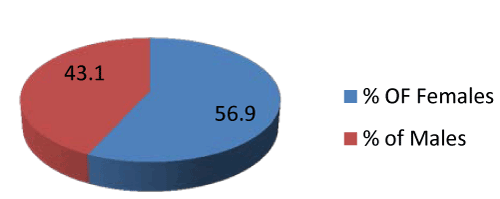 |
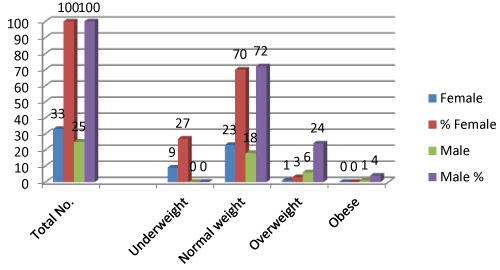 |
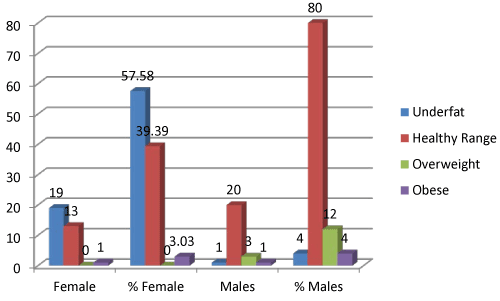 |
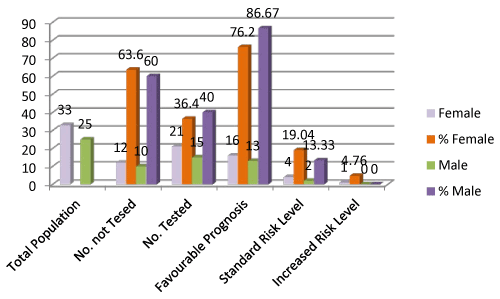 |
| Figure 1 | Figure 2 | Figure 3 | Figure 4 |
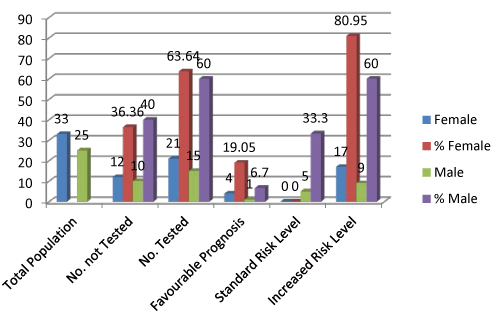 |
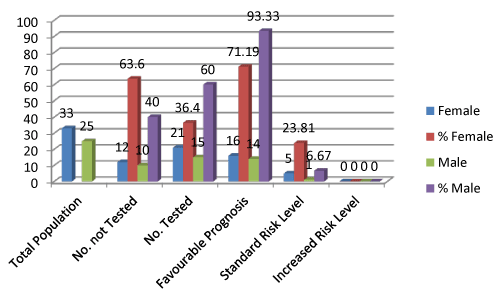 |
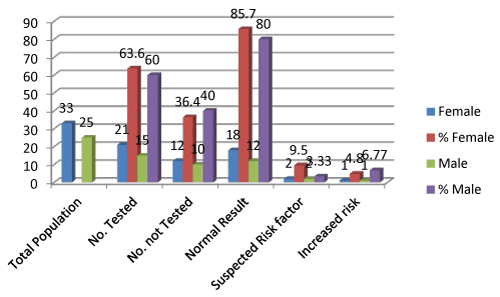 |
| Figure 5 | Figure 6 | Figure 7 |
Relevant Topics
- Android Obesity
- Anti Obesity Medication
- Bariatric Surgery
- Best Ways to Lose Weight
- Body Mass Index (BMI)
- Child Obesity Statistics
- Comorbidities of Obesity
- Diabetes and Obesity
- Diabetic Diet
- Diet
- Etiology of Obesity
- Exogenous Obesity
- Fat Burning Foods
- Gastric By-pass Surgery
- Genetics of Obesity
- Global Obesity Statistics
- Gynoid Obesity
- Junk Food and Childhood Obesity
- Obesity
- Obesity and Cancer
- Obesity and Nutrition
- Obesity and Sleep Apnea
- Obesity Complications
- Obesity in Pregnancy
- Obesity in United States
- Visceral Obesity
- Weight Loss
- Weight Loss Clinics
- Weight Loss Supplements
- Weight Management Programs
Recommended Journals
Article Tools
Article Usage
- Total views: 13723
- [From(publication date):
specialissue-2014 - Aug 30, 2025] - Breakdown by view type
- HTML page views : 9088
- PDF downloads : 4635
